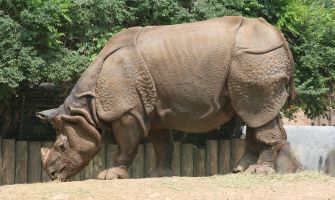All species of rhinoceros kept in captivity are prone to foot problems. Often these maladies are thought to be problems of the soft tissue alone; bone involvement is usually missed and radiographic studies are generally not ordered. In the past 40 years, only three rhinoceroses have been reported to have bone pathology. Foot problems in elephants, also megaherbivores (along with hippopotamuses and giraffes), are diagnosed much more often with the help of imaging techniques. An international team of German and French scientists decided to get to the bottom of this problem. Rhinoceroses with foot pathology in several zoos were examined using modern imaging techniques including CT scans and digital radiography. Nearly all the animals with foot problems were found to have bone pathology. The rhinoceros expert from the Institute for Zoo and Wildlife Research (IZW) concluded that limb bone pathology is much more common than had previously been thought. He argues that the leg bones of animals with foot problems should be included in diagnostic studies, perhaps even in routine health checks. It is pointed out that the wild rhinoceros populations are critically endangered, and that zoo populations could very well be critical to their survival. If that is the case, then it is of great import that zoo animals be healthy.
The article, “One small step for rhinos, one giant leap for wildlife management - imaging diagnosis of bone pathology in distal limb” was published in PLOS ONE.
Rhinoceros foot pathology
02oktober2013
Chronic foot disease is a common problem among captive Indian rhinoceroses. Difficult to treat, it represents a risk to the general health of the animal, leads to reproductive difficulties, and can also be fatal.
